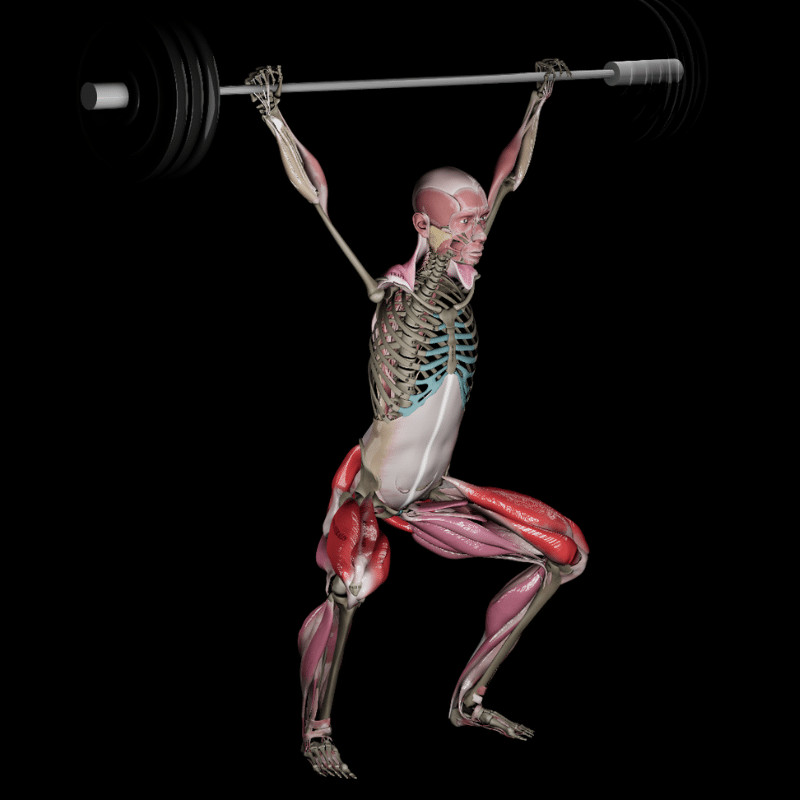To succeed in Olympic weightlifting, you don’t need magic–you need to understand five basic principles. Once you learn and apply them, you’ll improve your technique consistently and get more out of every single rep.
The fundamental difference between beginners and experienced lifters is not just strength or flexibility–it’s their ability to understand body mechanics and how to move efficiently. Olympic weightlifting is a sport with a simple goal: to move an external object. If we do it inefficiently, we waste much more energy than necessary.
The cost of inefficiency
Energy waste has two main consequences:
- We put in way more effort for the same rep, which creates unnecessary fatigue.
- We tire out much faster, which means fewer reps, fewer sets, and slower progress.
In other words, less progress means more risk of injury.
That’s why the goal is to turn complex movements like the snatch and the clean & jerk into technical movements, training smarter, not just harder. The smarter you train, the more energy you save, the more reps you can do, the stronger you get, and the safer you remain. At the same time, you build healthy movement habits instead of repeating mistakes that get harder to fix later.
In this Muscle and Motion article, we’ll break down the five key principles of weightlifting: efficiency, centers of gravity, maximum height, synchronization and relaxation, and feedback. Together, these principles provide a framework to train smarter, progress faster, and minimize your risk of injury.
Principle 1: Efficiency
Every movement should produce a result. If the bar moves a lot while your body moves very little, that’s efficient. If the bar barely moves but your body moves a lot, that’s inefficient.
One of the most common mistakes that illustrates this principle occurs in the first pull of the clean or snatch. Athletes often raise their hips too early and straighten their knees too soon, which stalls the bar and breaks efficiency. To move efficiently, it’s essential to maintain the correct starting position until the bar passes over the knees. This keeps the bar rising smoothly while the body remains stable and controlled.
It may feel uncomfortable at first, but this is exactly what professionals do. By holding the proper position in the beginning, they set up the rest of the lift to flow naturally.
Principle 2: Centers of gravity
In weightlifting, there are always two centers of gravity: the bar’s and your body’s. When they stay close together, the lift becomes easier to control and requires less effort. When they drift apart, efficiency is lost.
One of the most common mistakes that illustrates this principle is letting the bar move too far from the body. As soon as the bar drifts forward or away, it pulls the lifter out of position, making the movement more challenging to control. The more efficient approach is to keep the bar as close to the body as possible throughout the lift. This allows the bar to follow a straight path, helping you stay balanced.
It may feel demanding to maintain that proximity, but this is exactly what professionals do. By keeping the bar close, they make every rep smoother, more efficient, and easier to control.
Keep the bar close–that’s a golden rule.
Principle 3: Maximum height
The higher you pull the bar, the more time you have to move under it. Even a tenth of a second can be the difference between a desperate catch and a clean, smooth rep.
As a rule of thumb, if you can power clean a certain weight, you’ve already generated enough height to snatch that same weight. The question is whether you can pull under fast and low enough.
The secret is combining both: pulling as high as possible and catching as low as possible. Athletes who do this can lift more weight with less effort.
Principle 4: Synchronization and relaxation
Many lifters work too hard. They keep too many muscles stiff, which only slows the lift down.
A high-level lifter knows exactly which muscles should stay stiff and which should stay relaxed — allowing the movement to stay smooth, powerful, and efficient. Otherwise, it’s like driving with one foot on the gas and the other on the brake.
This is evident in the movement sequence of the clean or snatch: first, the jump, then the shrug and pull. If you reverse the order, you lose height, speed, and efficiency.
A correct lift should feel natural, not forced.
Principle 5: Feedback
Every rep tells a story. If the bar falls forward, your center of gravity drifts forward. If it falls back, it’s another clue.
Instead of getting frustrated with a missed lift, learn to read the feedback. Every rep becomes a small lesson. This creates a feedback loop: with each attempt, you learn something and continue to improve.
That’s the difference between an athlete who repeats the same mistakes and one who improves consistently.
In summary, weightlifting may appear complex, but at its core it rests on five simple principles: efficiency, centers of gravity, maximum height, synchronization and relaxation, and continuous feedback. Master these principles, and your training will become more innovative, safer, and effective. Ignore them, and you risk wasting energy, slowing your progress, and increasing the chance of injury.
The choice is clear: will you train purposefully or repeat the same mistakes?
Want to learn more about the biomechanics of the lifts and see which muscles are engaged at each stage? Discover more insights on the Muscle and Motion Strength Training app.
At Muscle and Motion, we believe that knowledge is power, and understanding the ‘why’ behind any exercise is essential for your long-term success.
Let the Strength Training App help you achieve your goals! Sign up for free.


